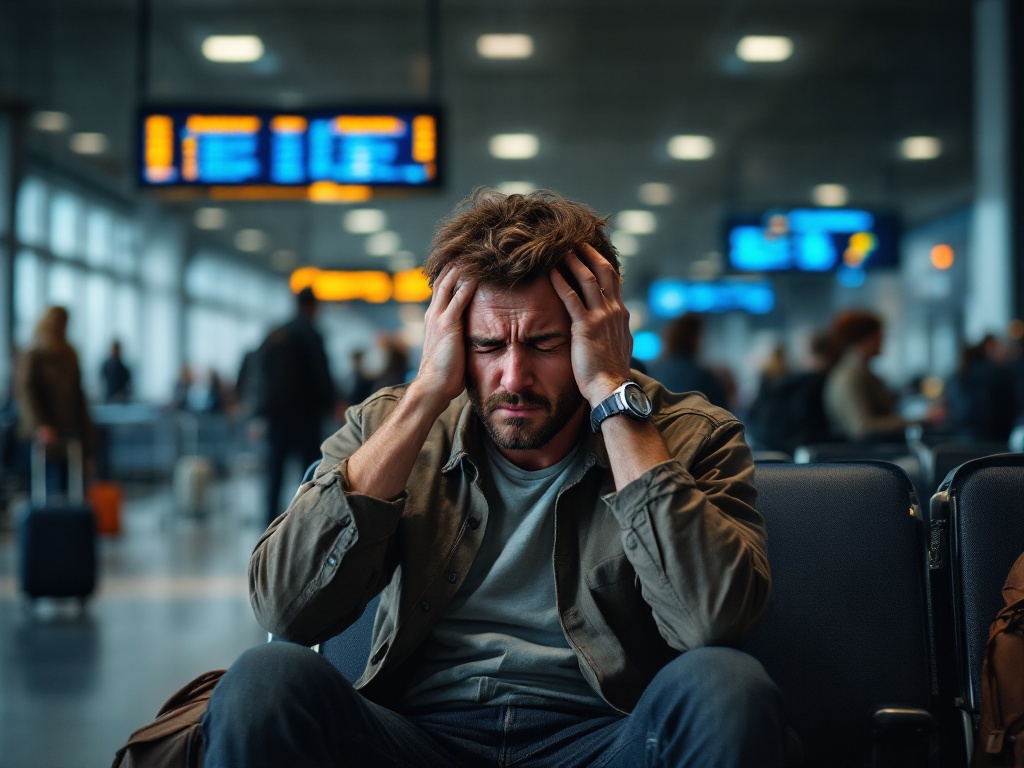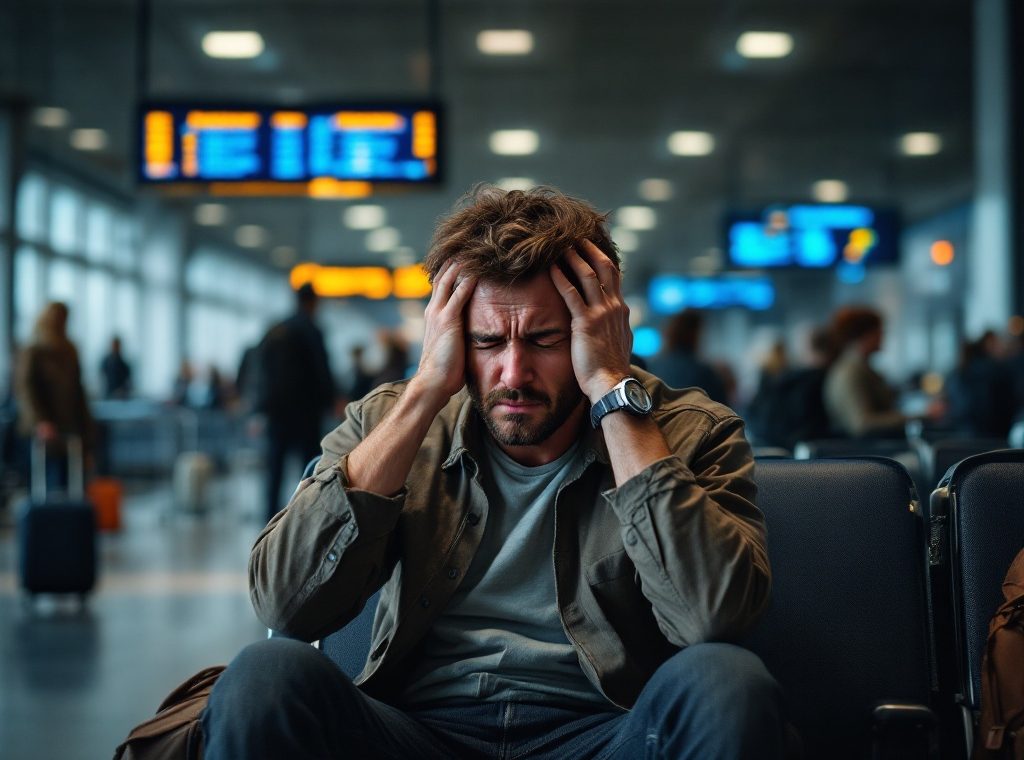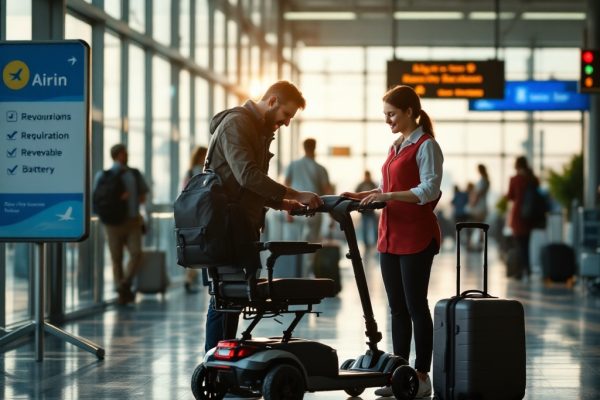Sinus Infection and Air Travel: Is It Safe?
Dreading that upcoming flight with a throbbing sinus infection? Discover the potential risks of flying with inflamed sinuses, from excruciating pain to rare complications like eardrum rupture. Learn how cabin pressure changes can worsen your symptoms and explore practical tips for managing sinus issues during air travel. This guide offers advice on decongestants, pressure-relieving techniques, and when to seek medical attention, empowering you to make informed decisions about flying with a sinus infection. Read on to ensure a more comfortable and safer journey.
Important information

- Flying with a sinus infection can worsen sinus pain and ear discomfort due to cabin pressure changes, especially during takeoff and landing.
- Sinus squeeze and airplane ear, caused by air pressure imbalances, are common problems experienced during flights, often worsened by pre-existing sinus issues.
- Decongestants, saline nasal spray, staying hydrated, and techniques like yawning or the Valsalva maneuver can help manage sinus pressure during a flight.
- If you have a severe sinus infection, postponing your flight is recommended. Consider alternative travel if possible.
- Consult a doctor before flying with a sinus infection, especially if symptoms are severe, to assess risks and receive appropriate treatment recommendations.
Should You Fly with a Sinus Infection?
Flying with a sinus infection is generally not advised. Cabin pressure changes during takeoff and landing can worsen sinus pain, while the dry air in the cabin can further irritate inflamed sinuses. This can make your flight quite uncomfortable.
Risks of Flying with a Sinus Infection
Changes in cabin pressure during takeoff and landing can worsen sinus infections, potentially causing pain by blocking your sinuses and ears. In rare cases, this pressure difference can even lead to eardrum rupture or bleeding. Flying with a sinus infection also increases the risk of developing a middle ear infection.
Symptoms and Effects of Sinus Infections During Air Travel
Air travel can exacerbate sinus infections. Cabin pressure fluctuations, especially during ascent and descent, can worsen sinus pain and discomfort, leading to headaches and facial pressure. Ear pressure and nasal congestion are also common. This is due to the sinuses struggling to adapt to the changing pressure, a condition known as sinus squeeze or barotrauma.
Common Sinus Symptoms Experienced on Flights
Air travel frequently leads to sinus problems. Passengers often report sinus congestion, headaches, and facial pain, sometimes quite severe. This pressure is often compounded by ear discomfort, as nasal congestion can block the Eustachian tube, increasing the pain.
Understanding Sinus Squeeze and Airplane Ear
Experiencing ear pain during flights? It’s likely sinus squeeze or airplane ear. Sinus squeeze occurs when cabin pressure changes affect your sinuses, causing discomfort. Airplane ear creates similar pain, but centered in your ears. Existing sinus issues can worsen airplane ear. Both conditions stem from air pressure imbalances between your sinuses or ears and the cabin.
Preventive Measures for Flying with Sinus Issues
Take a decongestant before your flight to help clear sinus pressure.
Stay hydrated by drinking plenty of water to keep nasal passages moist.
Use saline nasal spray to provide additional relief.
Try yawning or swallowing during takeoff and landing to equalize ear pressure.
Avoid alcohol and caffeine, as these can dehydrate you.
Consider taking an antihistamine if you suffer from allergies to minimize symptoms.
Using Decongestants for Sinus Pain Relief
Air travel can sometimes trigger sinus pain, but decongestants can provide relief. They constrict nasal blood vessels, which reduces swelling and congestion. This helps equalize pressure in your sinuses and ears, preventing discomfort. While Sudafed and phenylephrine are common options, consulting your doctor beforehand is advisable, particularly if you have high blood pressure.
Techniques to Alleviate Sinus Pressure During Flights
Ear and sinus pressure can be relieved through simple actions like chewing gum, swallowing, or yawning. Another effective technique is the modified Valsalva maneuver: gently blow air out while pinching your nostrils and keeping your mouth closed to equalize pressure. Staying hydrated and using saline nasal spray can also provide relief.
Chew gum, swallow, or yawn to relieve ear and sinus pressure.
Perform the modified Valsalva maneuver: gently blow air out while pinching your nostrils and keeping your mouth closed.
Stay hydrated and use saline nasal spray for additional relief.
Alternatives and Recommendations for Air Travel with Sinus Problems
Traveling by air with sinusitis can be uncomfortable, but several steps can make the experience more manageable. Use a saline nasal spray to keep your nasal passages moist. Over-the-counter pain relievers can also alleviate discomfort. If you have a severe sinus infection, consider postponing your trip. Explore alternative transportation options like driving or taking a train, as these can offer more comfort and flexibility in managing your symptoms.If flying is unavoidable, consult your doctor beforehand, particularly if your infection is severe or accompanied by significant pain or fever. During and after the flight, monitor for serious symptoms such as severe ear pain, dizziness, or hearing loss. Seek immediate medical attention if any of these symptoms occur.
Guidelines for Flying Safely with Sinusitis
If your symptoms are severe, postpone your flight.
For milder symptoms, decongestants or antihistamines can offer relief before and during travel.
Stay hydrated by drinking plenty of water and use saline nasal spray.
Skip the alcohol and caffeine.
To equalize ear pressure during takeoff and landing, try yawning or swallowing.
When to Seek Professional Medical Help
Consult a doctor if your sinus pain is severe, lingers, or you develop a fever. It’s also wise to seek their advice before flying. They can determine if it’s safe and recommend appropriate treatment.









